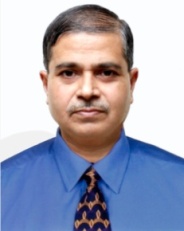
S M Motahar Hossain
Director General of Medical Services, Bangladesh
Title: Clinico-epidemiological study of dengue cases admitted in a tertiary level hospital of Bangladesh armed forces
Biography
Biography: S M Motahar Hossain
Abstract
Introduction: Dengue, a mosquito borne arboviral disease, is one of the febrile diseases in Bangladesh. With advanced modern
facilities in the field of diagnosis and management the case fatality of dengue has reduced to a great extent. Still it is the cause
of sufferings for the city dwellers. A considerable number of cases are encountered at Combined Military Hospital Dhaka.
Objectives: The study explored the susceptibility profile, sero-types and treatment outcome of the dengue patients attending
Combined Military Hospital Dhaka.
Methods: Data were collected from the medical registry of all 736 clinically and/or serologically diagnosed dengue patients
admitted into CMH Dhaka in the year 2016. Case series of descriptive epidemiological approach have been followed in this
study.
Results: Among the 736 cases, 48.37 percent were soldiers by rank. About 87% were male and 13% were female. Majority
(556=75.54%) of cases were in age group 19–49 years. Among this group 715 (97.15%) were from urban areas. Most of the cases
(654=88.86%) attended the hospital during July to November 2016. Among the clinically diagnosed cases, sero-positivity was
found 48.91%. Platelet concentrates were given to 1.49% cases. Antibiotics were administered in 40.76% cases, no steroid was
used. Out of 736 cases, 317 (43.07%) were of classical dengue. 418 (56.79%) cases were in grade-I form of dengue hemorrhagic
fever (DHF) and 1 (0.14%) case was of grade-IV form of DHF or dengue shock syndrome (DSS) who died during treatment.
Case fatality rate was only 0.14%.
Conclusions: High number of dengue cases indicates that the living environment is conductive to vector breeding, and/or
awareness about protective measures is inadequate. Moreover, dengue occurs mostly during rainy season especially from July
to November with the peak in October which indicates the seasonal influence.

